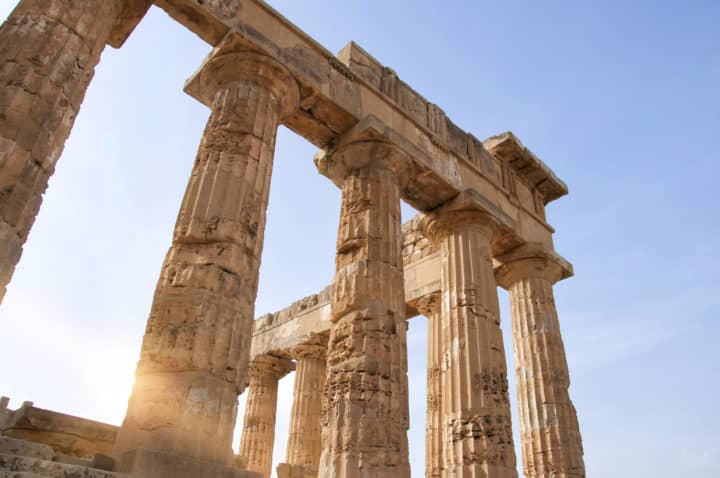 While the Spartans and their allies made a heroic stand at Thermopylae, the Persian armada collected near the coast of Euboea. In 480 B.C., King Xerxes had assembled a large army and navy to conquer Greece. To thwart this attack, the Athenian general Themistocles recommended that the forces of the allied Greek city-states block the Persian army’s advance at Thermopylae and stop their navy by blocking the nearby Straits of Artemisium. Here’s more information about the battle that took place here:
While the Spartans and their allies made a heroic stand at Thermopylae, the Persian armada collected near the coast of Euboea. In 480 B.C., King Xerxes had assembled a large army and navy to conquer Greece. To thwart this attack, the Athenian general Themistocles recommended that the forces of the allied Greek city-states block the Persian army’s advance at Thermopylae and stop their navy by blocking the nearby Straits of Artemisium. Here’s more information about the battle that took place here:
Prelude to the Battle
Under the command of the Spartan Eurybiades, approximately 270 Greek triremes made their way to Artemisium. After sailing through a major storm, the Persian fleet still numbered close to 650 ships. The Persian commander sailed around the coast of Euboea in an effort to trap the Greek army at Thermopylae and the navy at Artemisium in a large pincer movement. Alerted by spies and signal fires from the island of Euboea, the Greek navy sailed to meet the threat and protect the flank of King Leonidas and his Spartan.
Battle on the Sea
The sea battle took place over three days in August. On the first day, the Persians sent a small number of ships to attack the Greeks in hopes of a quick victory. The Greeks formed a crescent formation that blunted the attack. Using their superior seamanship, the Greeks then counterattacked and caught the Persians off guard. Nightfall ended the engagement. An overnight storm shipwrecked several Persian ships. The next day, the two navies repositioned their fleets.
The major engagement took place on the third day. The Persian fleet attacked in force hoping to break the Greek battle line. The battle lasted the entire day. Although suffering significant losses, especially to the more experienced Athenian contingent, the Grek line held. The two opposing forces disengaged at nightfall. After receiving a message about the defeat at Thermopylae, holding the Straits of Artemisium was no longer required, and the fleet was ordered south. Delaying the Persian fleet enabled the evacuation of Athens, Euboea and other areas ahead of the invasion.
The Aftermath of the Battle
The failure to stop the Persian army and navy enabled the invaders to sack a large part of Greece, including the cities of Athens, Platea and Thespiae. The allied Greek land forces withdrew to the Isthmus of Corinth where they would make a final stand. Themistocles persuaded the Greek alliance that the navy was capable of seeking a decisive victory at the Straits of Salamis.
Although the Battle of Artemisium was a tactical draw, it was a strategic victory. The untested Greek sailors gained valuable experience. Their commanders were able to learn Persian tactics and develop battle plans to defeat their armada. This skill and knowledge enabled the Greeks to defeat the Persians at the pivotal Battle of Salamis the following month. Without naval protection, Xerxes was forced to abandon his goal of conquering Greece and withdrew the bulk of his army.

